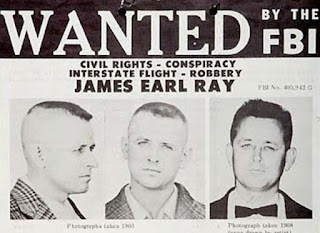Martin Luther King Jr
Martin Luther king Jr, Facts
Martin Luther King Jr. was born in 1929 in Atlanta, Georgia. King, a Baptist minister and civil-rights activist, had a seismic impact on race relations in the United States, beginning in the mid-1950s.
Among his many efforts, King headed the Southern Christian Leadership Conference. Through his activism and inspirational speeches he played a pivotal role in ending the legal segregation of African-American citizens in the United States, as well as the creation of the Civil Rights Act of 1964 and the Voting Rights Act of 1965.
King received the Nobel Peace Prize in 1964, among several other honors. He was assassinated in April 1968, and continues to be remembered as one of the most influential and inspirational African-American leaders in history..
In his early years
Born as Michael King Jr. on January 15, 1929, Martin Luther King Jr. was the middle child of Michael King Sr. and Alberta Williams King. The King and Williams families were rooted in rural Georgia. Martin Jr.'s grandfather, A.D. Williams, was a rural minister for years and then moved to Atlanta in 1893. He took over the small, struggling Ebenezer Baptist church with around 13 members and made it into a forceful congregation. He married Jennie Celeste Parks and they had one child that survived, Alberta. Michael King Sr. came from a sharecropper family in a poor farming community. He married Alberta in 1926 after an eight-year courtship. The newlyweds moved to A.D. Williams' home in Atlanta.
Michael King Sr. stepped in as pastor of Ebenezer Baptist Church upon the death of his father-in-law in 1931. He too became a successful minister, and adopted the name Martin Luther King Sr. in honor of the German Protestant religious leader Martin Luther. In due time, Michael Jr. would follow his father's lead and adopt the name himself.
Young Martin had an older sister, Willie Christine, and a younger brother, Alfred Daniel Williams King. The King children grew up in a secure and loving environment. Martin Sr. was more the disciplinarian, while his wife's gentleness easily balanced out the father's more strict hand. Though they undoubtedly tried, Martin Jr.’s parents couldn’t shield him completely from racism. Martin Luther King Sr. fought against racial prejudice, not just because his race suffered, but because he considered racism and segregation to be an affront to God's will. He strongly discouraged any sense of class superiority in his children which left a lasting impression on Martin Jr.
Growing up in Atlanta, Georgia, Martin Luther King Jr. entered public school at age 5. In May, 1936 he was baptized, but the event made little impression on him. In May, 1941, Martin was 12 years old when is grandmother, Jennie, died of a heart attack. The event was traumatic for Martin, more so because he was out watching a parade against his parents' wishes when she died. Distraught at the news, young Martin jumped from a second story window at the family home, allegedly attempting suicide.
King attended Booker T. Washington High School, where he was said to be a precocious student. He skipped both the ninth and eleventh grades, and entered Morehouse College in Atlanta at age 15, in 1944. He was a popular student, especially with his female classmates, but an unmotivated student who floated though his first two years. Although his family was deeply involved in the church and worship, young Martin questioned religion in general and felt uncomfortable with overly emotional displays of religious worship. This discomfort continued through much of his adolescence, initially leading him to decide against entering the ministry, much to his father's dismay. But in his junior year, Martin took a Bible class, renewed his faith and began to envision a career in the ministry. In the fall of his senior year, he told his father of his decision.
 |
| Martin Luther king Jr speaks with people after an official meeting in his home town |
 |
| Martin Luther King Jr in the Civil Rights Movements in Washington |
'I Have A Dream'
In the spring of 1963, Martin Luther King Jr. organized a demonstration in downtown Birmingham, Alabama. Entire families attended. City police turned dogs and fire hoses on demonstrators. Martin Luther King was jailed along with large numbers of his supporters, but the event drew nationwide attention. However, King was personally criticized by black and white clergy alike for taking risks and endangering the children who attended the demonstration. From the jail in Birmingham, King eloquently spelled out his theory of non-violence: "Nonviolent direct action seeks to create such a crisis and foster such a tension that a community, which has constantly refused to negotiate, is forced to confront the issue."
By the end of the Birmingham campaign, Martin Luther King Jr. and his supporters were making plans for a massive demonstration on the nation's capital composed of multiple organizations, all asking for peaceful change. On August 28, 1963, the historic March on Washington drew more than 200,000 people in the shadow of the Lincoln Memorial. It was here that King made his famous "I Have a Dream" speech, emphasizing his belief that someday all men could be brothers.
The rising tide of civil rights agitation produced a strong effect on public opinion. Many people in cities not experiencing racial tension began to question the nation's Jim Crow laws and the near century second class treatment of African-American citizens. This resulted in the passage of the Civil Rights Act of 1964 authorizing the federal government to enforce desegregation of public accommodations and outlawing discrimination in publicly owned facilities. This also led to Martin Luther King receiving the Nobel Peace Prize in 1964.
King's struggle continued throughout the 1960s. Often, it seemed as though the pattern of progress was two steps forward and one step back. On March 7, 1965, a civil rights march, planned from Selma to Alabama's capital in Montgomery, turned violent as police with nightsticks and tear gas met the demonstrators as they tried to cross the Edmund Pettus Bridge. King was not in the march, however the attack was televised showing horrifying images of marchers being bloodied and severely injured. Seventeen demonstrators were hospitalized in a day that would be called "Bloody Sunday." A second march was cancelled due to a restraining order to prevent the march from taking place. A third march was planned and this time King made sure he was part of it. Not wanting to alienate southern judges by violating the restraining order, a different approach was taken. On March 9, 1965, a procession of 2,500 marchers, both black and white, set out once again to cross the Pettus Bridge and confronted barricades and state troopers. Instead of forcing a confrontation, King led his followers to kneel in prayer and they then turned back. Alabama governor George Wallace continued to try to prevent another march, however, President Lyndon Johnson pledged his support and ordered U.S. Army troops and the Alabama National Guard to protect the protestors. On March 21, approximately 2,000 people began a march from Selma to the capitol in Montgomery. On March 25, the number of marchers, which had grown to an estimated 25,000, gathered in front of the state capitol where Dr. King delivered a televised speech. Five months after the historic peaceful protest, President Johnson signed the 1965 Voting Rights Act.
From late 1965 through 1967, Martin Luther King Jr. expanded his civil rights efforts into other larger American cities, including Chicago and Los Angeles. But he met with increasing criticism and public challenges from young black power leaders. King's patient, non-violent approach and appeal to white middle-class citizens alienated many black militants who considered his methods too weak, too late and ineffective. To address this criticism, King began making a link between discrimination and poverty, and he began to speak out against the Vietnam War. He felt that America's involvement in Vietnam was politically untenable and the government's conduct in the war discriminatory to the poor. He sought to broaden his base by forming a multi-race coalition to address economic and unemployment problems of all disadvantaged people.
Assassination and Legacy
By 1968, the years of demonstrations and confrontations were beginning to wear on Martin Luther King Jr. He had grown tired of marches, going to jail, and living under the constant threat of death. He was becoming discouraged at the slow progress of civil rights in America and the increasing criticism from other African-American leaders. Plans were in the works for another march on Washington to revive his movement and bring attention to a widening range of issues. In the spring of 1968, a labor strike by Memphis sanitation workers drew King to one last crusade. On April 3, he gave his final and what proved to be an eerily prophetic speech, “I’ve Been to the Mountaintop,” in which he told supporters at the Mason Temple in Memphis, "I've seen the promised land. I may not get there with you. But I want you to know tonight that we, as a people, will get to the promised land." The next day, while standing on a balcony outside his room at the Lorraine Motel, Martin Luther King Jr. was struck by a sniper's bullet. The shooter, a malcontent drifter and former convict named James Earl Ray, was eventually apprehended after a two-month, international manhunt. The killing sparked riots and demonstrations in more than 100 cities across the country. In 1969, Ray pleaded guilty to assassinating King and was sentenced to 99 years in prison. He died in prison on April 23, 1998.
Martin Luther King Jr.'s life had a seismic impact on race relations in the United States. Years after his death, he is the most widely known African-American leader of his era. His life and work have been honored with a national holiday, schools and public buildings named after him, and a memorial on Independence Mall in Washington, D.C. But his life remains controversial as well. In the 1970s, FBI files, released under the Freedom of Information Act, revealed that he was under government surveillance, and suggested his involvement in adulterous relationships and communist influences. Over the years, extensive archival studies have led to a more balanced and comprehensive assessment of his life, portraying him as a complex figure: flawed, fallible and limited in his control over the mass movements with which he was associated, yet a visionary leader who was deeply committed to achieving social justice through nonviolent means.
 |
| A picture of Martin Luther King Jr funeral |
 |
| James Earl Ray who murdered Martin Luther King Jr |



Comments
Post a Comment